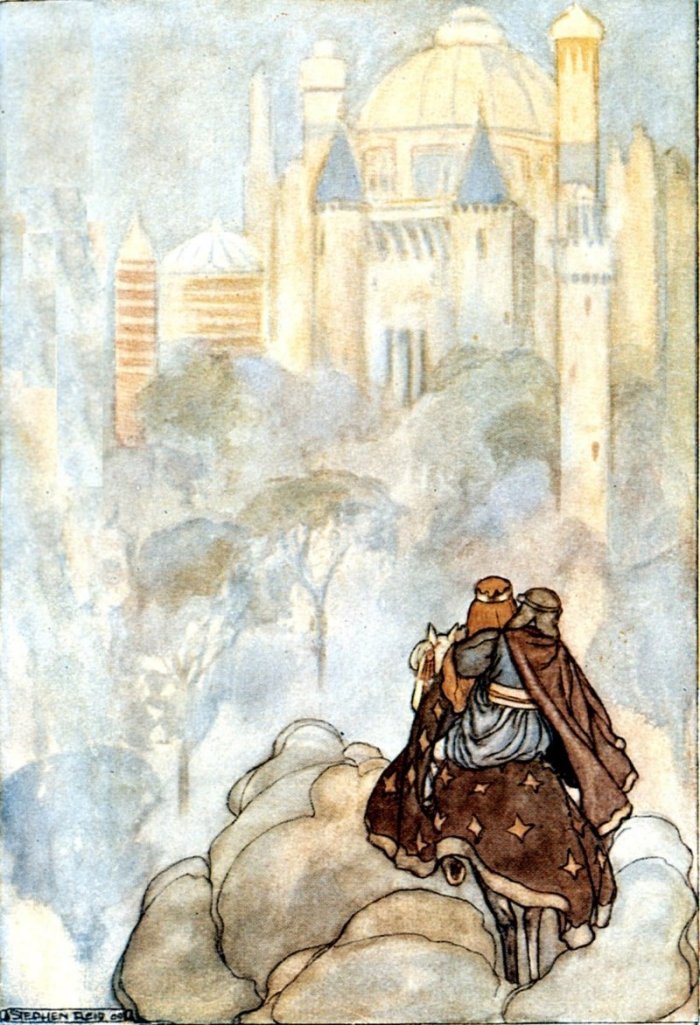Tír na nÓg – Mythical Land Where Time Floats Slower Than In Mortal Lands
A. Sutherland—AncientPages.com—In Celtic and, especially, Irish mythology, Tir na n'Og is a realm of the afterlife and one of the Happy Islands known from legends.
The 'Land of the Forever Young' was often identified as an underground realm or a mysterious land beneath the sea.
Tir na nOg - mythical realm of the afterlife. Credit. Adobe Stock - Konstantin Gerasimov
The inhabitants of this magical place would remain forever young and happy. Nobody wanted food or drink, and illness, ugliness, and death did not have access to Tir na n'Og.
Floating Time On Magical Tir na nÓg Island
As on other Happy Islands also on Tír na nÓg, the time flows slower than in the land of mortals.
Legend says that "one year on earth equals one minute in Tir na nÓg. It would explain how the beings of similar otherworlds in other ancient traditions could have an almost unimaginable life span.
On Tír na nÓg, the suspension of the aging process takes place for all who dwell there, and it's undoubtedly the most prominent quality of this realm of the afterlife.
In the early saga 'The Adventure of Nera' (Echtrae Nerai), about a warrior of Connacht in the Ulster Cycle, it is written that: "it is within the world you have left, as an apple is within its skin, and all who die in your world come to this one. But within this world is another called the 'Land of Wonders,' and those who die here, or who can wish to do so, go to the Land of Wonders.
Within the Land of Wonders, there is yet a world called the 'Land of Promise,' and those who die in the Land of Wonders are born into the Land of Promise, but they cannot die there until they can wish to do so…"
Oisin's Visit In The Land Of Youth
In the 'Song of Oisín in the Land of Youth' (Laoi Oisín and Tir na nÓg) dominates a wealth of riches, a never-ending spring, and sumptuous feasts accompanied by excellent music.
As we remember, a similar place was also the Elysian Fields in Greek beliefs, and Valhalla in Norse mythology was also a paradise-like place for warriors.
According to an enchanting ancient legend, the most famous human visitor to Tir na n'Og was the legendary Celtic poet and the greatest poet of Ireland, Oisin. Oisin (Ossian) was the son of Fionn Mac Cumhail, a legendary Irish hero, clairvoyant, and leader of Fianna warriors.
Occasionally mortal men were invited to Tir Nan Og, and Oisin (Ossian) was one of them.
In Scottish tradition, Oisin went into a síd or to Tír na nÓg ("the Land of Youth"), where he met a pretty woman who said, "Will you not go with your mother?"
Then she opened a door in the rock, and Oisin remained with her for centuries, although it seemed only a week. But when he wished to return to the land of mortals, she told him that none of them was left.
In an Irish version, on the other hand, Oisin entered a cave and there saw a woman, also gorgeous (but not his mother). Her name was Niamh, and she was the daughter of the King of Tir na nÓg. Oisin spent three hundred years there, although, for a mortal Oisín, this long time passed like just a few days.
Oisín and Niamh travelling to Tír na nÓg, illustration by Stephen Reid in T. W. Rolleston's The High Deeds of Finn (1910). STEPHEN REID - THE HIGH DEEDS OF FINN AND OTHER BARDIC ROMANCES OF ANCIENT IRELAND BY T. W. ROLLESTON, illustrated by STEPHEN REID http://www.gutenberg.org/files/14749/14749-h/14749-h.htm#IL16
He was happy in "the Land of Youth" but not entirely because he longed for home. Niamh gave him a magical white steed and warned him not to dismount the animal, but on his way home, Oisin met men trying to lift a marble flagstone. They asked appealed to him for aid, and stooping from his horse, he raised the stone; but as he did so, his foot touched the ground, whereupon his horse vanished, and he found himself a worn, blind old man... " 1
Sidhe And Festival Of Samhain
The ancient Celtic festival of Samhain was celebrated 2,000 years ago in the areas now known as Ireland, the United Kingdom, and northern France. People who lived in early medieval Ireland believed that during the festival, "the earth-bound spirits were briefly free to leave the sídhe ("mounds"). Otherwise, they lived underground in fairy mounds or an invisible world that coexists with the world of humans. In this understanding of cosmology, the sídhe are the entrance places to Tír na nÓg. Still, they also mean supernatural creatures in Scottish and Irish myths, similar to the fairies or elves but quite different from humans.
In the Book of Invasion, this world is described as a parallel universe, in which the sidhe walk amongst the living. Later, the hills and the people inhabiting them became known as sídhe. Among many Celtic traditions, also in Scotland, there was an ancient belief originating from the Irish mythology of the Tuatha Dé Danann living in Tír na nÓg that this wonderful world was entered through prehistoric mounds. These Irish underground homes were the fairy sídhe.
Otherwise, hillsides and ancient burial mounds were associated with the "little people" dancing and living under them.
Written by – A. Sutherland - AncientPages.com Senior Staff Writer
Updated on March 18, 2024
Copyright © AncientPages.com All rights reserved. This material may not be published, broadcast, rewritten or redistributed in whole or part without the express written permission of AncientPages.com
Expand for referencesReferences:
- MacCulloch, John Arnott. Celtic Mythology (pp. 180-181).
More From Ancient Pages
-
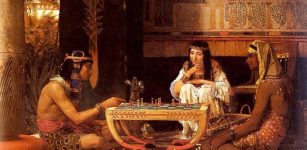 Ancient Egyptians Had A Different Definition Of ‘Foreigners’
Ancient History Facts | Apr 14, 2018
Ancient Egyptians Had A Different Definition Of ‘Foreigners’
Ancient History Facts | Apr 14, 2018 -
 Unexplained Visions Of Airmen – Controversial Investigation – Part 2
Featured Stories | Feb 9, 2020
Unexplained Visions Of Airmen – Controversial Investigation – Part 2
Featured Stories | Feb 9, 2020 -
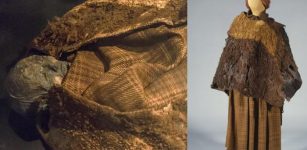 Unsolved Mystery Of The Huldremose Woman: One Of The Best Preserved Bog Bodies Ever Found
Civilizations | Jan 9, 2017
Unsolved Mystery Of The Huldremose Woman: One Of The Best Preserved Bog Bodies Ever Found
Civilizations | Jan 9, 2017 -
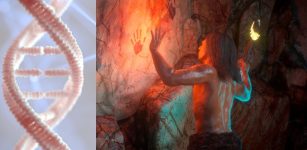 Something Strange Happened To Our Ancestors 900,000 Years Ago – Genetic Study Reveals
DNA | Sep 1, 2023
Something Strange Happened To Our Ancestors 900,000 Years Ago – Genetic Study Reveals
DNA | Sep 1, 2023 -
 Maori God Pourangahua And His Flying Bird Traversing The Ancient Skies
Featured Stories | Oct 4, 2015
Maori God Pourangahua And His Flying Bird Traversing The Ancient Skies
Featured Stories | Oct 4, 2015 -
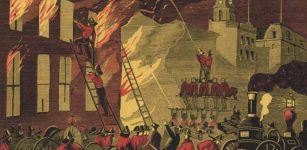 Ancient Inventions Of Firefighting Vehicles
Ancient History Facts | Feb 16, 2016
Ancient Inventions Of Firefighting Vehicles
Ancient History Facts | Feb 16, 2016 -
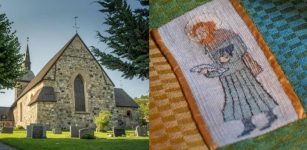 Saint Botvid – Viking Who Was Killed By A Slave He Granted Freedom
Featured Stories | Apr 10, 2023
Saint Botvid – Viking Who Was Killed By A Slave He Granted Freedom
Featured Stories | Apr 10, 2023 -
 The Kitchen God In Ancient Vietnamese Tradition Is Still Alive
Featured Stories | Feb 23, 2016
The Kitchen God In Ancient Vietnamese Tradition Is Still Alive
Featured Stories | Feb 23, 2016 -
 Evidence Of Biblical Kingdom Of Edom In Arava Desert – Discovered
Archaeology | Sep 23, 2019
Evidence Of Biblical Kingdom Of Edom In Arava Desert – Discovered
Archaeology | Sep 23, 2019 -
 Homo Bodoensis Is A New Species Of Human Ancestors Who Lived Half A Million Years Ago
Archaeology | Nov 1, 2021
Homo Bodoensis Is A New Species Of Human Ancestors Who Lived Half A Million Years Ago
Archaeology | Nov 1, 2021 -
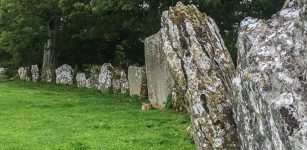 ‘Lios na Grainsi’ – Ireland’s Largest Stone Circle
Civilizations | Feb 3, 2016
‘Lios na Grainsi’ – Ireland’s Largest Stone Circle
Civilizations | Feb 3, 2016 -
 Will The Oven Bricks Of The Tudor Warship The Mary Rose Be Preserved Before It’s Too Late?
Artifacts | Apr 7, 2022
Will The Oven Bricks Of The Tudor Warship The Mary Rose Be Preserved Before It’s Too Late?
Artifacts | Apr 7, 2022 -
 Babylon Excavation Uncovers 478 Artifacts, Including Cuneiform Tablets and Seals
Archaeology | Oct 17, 2024
Babylon Excavation Uncovers 478 Artifacts, Including Cuneiform Tablets and Seals
Archaeology | Oct 17, 2024 -
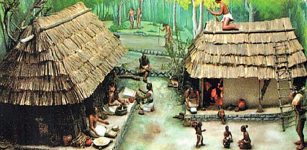 Ancient Maya: Wealth Inequality And Despotism That Governed The Society
Archaeology | Mar 26, 2021
Ancient Maya: Wealth Inequality And Despotism That Governed The Society
Archaeology | Mar 26, 2021 -
 First Solid Scientific Evidence That Vikings Brought Animals To Britain
Archaeology | Feb 1, 2023
First Solid Scientific Evidence That Vikings Brought Animals To Britain
Archaeology | Feb 1, 2023 -
 Dwarf Alvis (‘All-Wise’) Who Was Tricked By God Thor And Turned Into Stone
Featured Stories | May 27, 2019
Dwarf Alvis (‘All-Wise’) Who Was Tricked By God Thor And Turned Into Stone
Featured Stories | May 27, 2019 -
 Nue – Mysterious Mythological Shape-Shifting Creature Transforming Into A Black Cloud
Featured Stories | Jun 12, 2020
Nue – Mysterious Mythological Shape-Shifting Creature Transforming Into A Black Cloud
Featured Stories | Jun 12, 2020 -
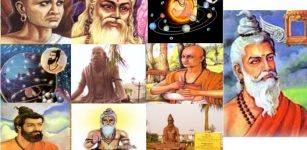 10 Remarkable Ancient Indian Sages Familiar With Advanced Technology And Science Long Before Modern Era
Featured Stories | Oct 19, 2015
10 Remarkable Ancient Indian Sages Familiar With Advanced Technology And Science Long Before Modern Era
Featured Stories | Oct 19, 2015 -
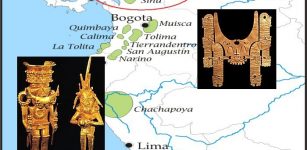 Malagana Remarkable Sophisticated Goldwork: Legacy Of Colombian Pre-Hispanic Culture
Artifacts | Nov 14, 2018
Malagana Remarkable Sophisticated Goldwork: Legacy Of Colombian Pre-Hispanic Culture
Artifacts | Nov 14, 2018 -
 Large 3,400-Year-Old Mittani Empire-Era City Emerges From The Tigris River In Iraq
Archaeology | May 30, 2022
Large 3,400-Year-Old Mittani Empire-Era City Emerges From The Tigris River In Iraq
Archaeology | May 30, 2022



